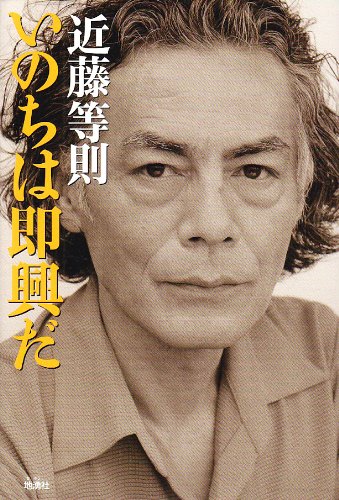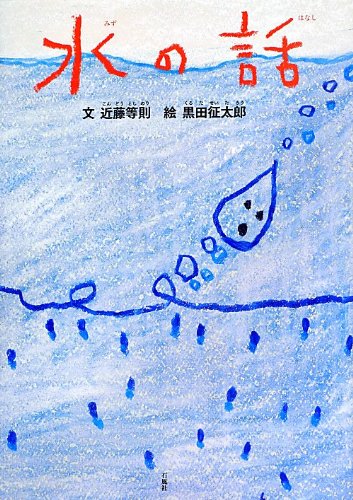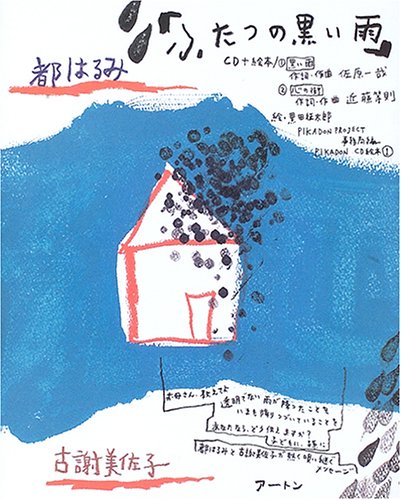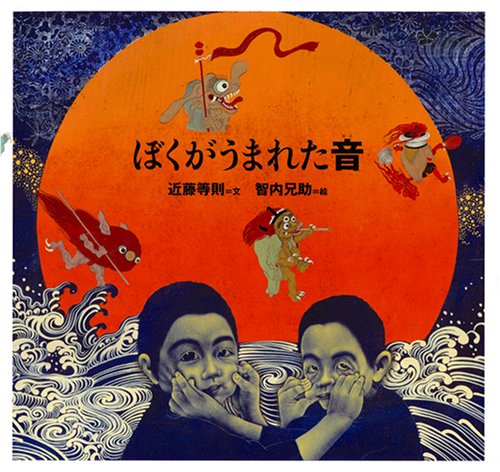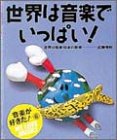1 0 0 0 ふたつの黒い雨
- 著者
- PIKADON PROJECT事務局編
- 出版者
- アートン
- 巻号頁・発行日
- 2005
1 0 0 0 悲しい恋の物語 : Junk enlightenment
1 0 0 0 世界は音楽でいっぱい! : 世界の音楽・日本の音楽
1 0 0 0 そよ風ときにはつむじ風
1 0 0 0 OA フラクタル-自己相似集合について
- 著者
- 畑 政義
- 出版者
- 一般社団法人 日本数学会
- 雑誌
- 数学 (ISSN:0039470X)
- 巻号頁・発行日
- vol.42, no.4, pp.304-316, 1990-11-09 (Released:2008-12-25)
- 参考文献数
- 47
1 0 0 0 延慶本『平家物語』後白河法皇芸能説話考
- 著者
- 由井 恭子
- 出版者
- 大正大学国文学会
- 雑誌
- 国文学踏査 (ISSN:02883392)
- 巻号頁・発行日
- no.25, pp.35-47, 2013-03
1 0 0 0 IR 『源氏物語』弾物四種の女楽が描くもの:「跡ある」琴と「跡なき」和琴をめぐって
- 著者
- 今井 久代
- 雑誌
- 日本文學 (ISSN:03863336)
- 巻号頁・発行日
- no.108, pp.39-53, 2012-03-15
1 0 0 0 OA 帯電エアロゾルを用いた高結晶性微粒子の多次元集積と評価
- 著者
- LENGGORO WULED
- 出版者
- 東京農工大学
- 雑誌
- 基盤研究(C)
- 巻号頁・発行日
- 2011
ナノ粒子合成技術と高い選択性をもつ粒子集積化技術を用いて、気相プロセスに液相法の利点を組み込んだ「複合型ナノ材料プロセッシング」を開発した。静電気力を用いて、気中におけるナノ粒子の輸送と基板上のナノ粒子群の構造を制御し、高感度の環境センサ素子を構成するナノ粒子構造体における最適な幾何学的構造モデルを試みた。材料とする懸濁液を用い、その後のプロセスを気相において行う輸送制御技術を開発した。構造体の形成技術として、安定した懸濁液の調整とエアロゾル化技術、静電気力を用いた気中での粒子の輸送・制御技術、基板の帯電パターニングによる粒子集積制御技術を開発し、一連の技術の高度化を行った。
1 0 0 0 気中浮遊粒子の沈着に及ぼす静電気力の影響の評価
- 著者
- 山下 礼二 島田 学 植林 信一
- 出版者
- 公益社団法人 空気調和・衛生工学会
- 雑誌
- 空気調和・衛生工学会 論文集 (ISSN:0385275X)
- 巻号頁・発行日
- vol.16, no.45, pp.13-18, 1991
- 被引用文献数
- 1
大きさが0.5〜3μmの粒子を対象として,ダウンフロークリーンルーム内に置かれた物体への粒子沈着実験を行った.沈着に及ぼす静電気力の影響を調べるため,接地した平板と,正または負の電圧を印加した平板を沈着面として使用し,円管内を層流で流れる単分散エアロゾル粒子を室内気流と等速で吹き付けた.また,粒子の帯電量分布の測定も行った.平板表面に付着した粒子の個数から沈着速度を求めたところ,粒子に働く重力ならびにクーロン力の解析結果に基づいて得られた理論値との間に良い一致がみられた.本報の結果より,粒子沈着量の予測においては粒子の帯電状態および沈着面近傍の電場の把握が重要であることが示唆された.
1 0 0 0 腎細胞癌の甲状腺転移例
- 著者
- 金城 秀俊 安慶名 信也 上里 迅 真栄田 裕行 鈴木 幹男
- 出版者
- 特定非営利活動法人 日本頭頸部外科学会
- 雑誌
- 頭頸部外科 (ISSN:1349581X)
- 巻号頁・発行日
- vol.30, no.1, pp.67-72, 2020
転移性甲状腺腫瘍は稀であり,特別な画像所見がないため術前に診断をつけることが難しい。われわれは腎細胞癌の甲状腺転移例を経験したので報告する。症例は55歳,女性。当科初診11年前に腎細胞癌により右腎摘出を受けた。受診9年前に膵頭部に再発し同部位を摘出された。受診3-4年前に右甲状腺腫大を認め増大傾向にあった。穿刺吸引細胞診で濾胞性腫瘍疑いの診断を受け,当科を受診した。甲状腺以外に頭頸部領域に腫瘍性病変を認めず,原発性甲状腺悪性腫瘍として葉峡切除術(右葉)+右気管傍郭清術を施行した。術後病理で腎細胞癌の転移と判明した。術後21か月で肺転移を認め追加治療中であるが,頭頸部には明らかな再発を認めていない。
- 著者
- 本屋敷 涼 仲座 栄三 宮里 信寿 福森 匡泰 田中 聡 Carolyn SCHAAB
- 出版者
- 公益社団法人 土木学会
- 雑誌
- 土木学会論文集B2(海岸工学) (ISSN:18842399)
- 巻号頁・発行日
- vol.76, no.1, pp.20-37, 2020
<p> 階段式護岸のステップ高は通常0.2~0.3m程度に設定されている.しかしながら,こうした緩勾配階段式護岸の勾配は人の歩行を考えて1/2~1/3程度に取られるため,占有面積が大きくなることや波の遡上高が高くなるなどの問題点を抱えている.階段式護岸設置の主な理由は,人の海岸利用や景観への配慮など親水性向上にある.したがって,実務設計者は,波の遡上高や反射率など防災上必要となる数値的な把握のみでなく,実際に護岸上で繰り広げられる砕波現象,流れや渦の発生など,水理学的特性の把握も求められる.本研究は,CADMAS-SURFを用いた数値計算によって,代表例としてステップの高さが0.2mと1.4mの場合の波の遡上高及び反射率の特性を対象に,波の砕波形態,ステップ上での流れや渦の発生など水理学的な特性との関連を明らかにしている.</p>
1 0 0 0 OA 母なるものの本質的機能 ―親子相互交流療法(PCIT)によるジェンダーフリーな子育て―
- 著者
- 國吉 知子 Tomoko KUNIYOSHI
- 雑誌
- 女性学評論 = Women's Studies Forum
- 巻号頁・発行日
- vol.34, pp.1-20, 2020-03-20
本稿は2019年女性学インスティチュート連続セミナー「母なるものの役割」 において筆者が担当した「現代家族の中の母」をもとに加筆修正したものである。まず、現代の子どもと母親の置かれた状況について理解するために、幼稚園教諭から見た子どもの問題行動の実態調査の結果や、親子相互交流療法 (Parent‒Child Interaction Therapy:以下PCIT)に来談する母親が直面する子どもの問題行動への対処の困難感を紹介した。次に、筆者は「母なるもの」すなわち「母性性」について、養育者と子どもの心理的相互作用メカニズムに関する近年の脳科学の知見を援用し「母なるものの本質的機能」を再考し、さらに今井(2009)の研究をもとに父性と母性が、与える親の性別に限定されないことを指摘した。最後に、筆者が2013年から実施しているPCITについて解説し、子どもの共感性や自己制御能力を育成するために親がとるべき役割、行動について、母性・父性、ジェンダーの視点から考察を試みた。結論として、PCITは前半の子どもを受容する母性的機能、後半の子どもへの統制を行う父性的機能が構造化されているが、PCITは養育者の性別を問わないため、PCITを用いることで養育者のジェンダーにかかわらず母性性、父性性双方のバランスがとれた子育てが可能になることを示した。
1 0 0 0 OA 研究型大学の学術マネジメント : その体制と潮流
- 著者
- 船守 美穂
- 雑誌
- 日本高等教育学会大会発表要旨集録
- 巻号頁・発行日
- vol.16, pp.53-54, 2013-05-25
付 発表資料
1 0 0 0 OA 15・6世紀を中心とする江南地方劇の変質について(5)
- 著者
- 田仲 一成
- 出版者
- 東京大学東洋文化研究所
- 雑誌
- 東洋文化研究所紀要 (ISSN:05638089)
- 巻号頁・発行日
- vol.72, pp.129-440, 1977-03
In the previous two chapters (II & III), the author came to the conclusion that the scripts of local dramas had been differentiated into three kinds;(1) the classical type of scripts with naive expressions to be used for the performance of village community plays,(2) the new type of scripts with elegant expressions for landlord's clan plays, and (3) vulgar scripts with licentious and rebellious expressions for market plays. Under these circumstances, it would be natural to suppose that from one basic text there had come out variations of popular drama used for the performance of all kinds of plays. Sufficient clues to resolve this problem can be found in the critical notes of P‘an-k‘e-shih-jen 槃〓碩人 on P‘i-p‘a chi 琵琶記 and Hsi-hsiang chi 西廂記, in which the reviser described the differences in words and phrases as regional variants, such as Texts of Metropolitan Drama 京本, Min Drama 〓本, Hui Drama 徽本, Wu Drama 呉本, etc. These notes lead us to take note that regional variations corresponded with each of the abovementioned kinds of scripts according to the basis of social class. Thus, in the supplementary part of Chapter IV, the author makes a careful analysis of the variants of both P‘i-p‘a chi and Hsi-hsiang chi texts to examine the relation between regional and social divisions among local dramas. (1) The first group of texts with naive and unrefined expressions are identified with Wu Drama Texts (or Old Drama Texts 旧本). Their words and phrases might have originated from immature performances at the she-miao 社廟 plays, and thus they can be regarded as the scripts for village community plays. (2) The second group of texts, which corresponded with Min Drama Texts, would be used mainly for clan plays in landowners'residences, for crude and simple expressions of Wu Drama Texts were generally revised into elegant and noble ones in Min Drama Texts. But there were still found some unrefined words well suited for village community plays. Therefore we presume that this group were formed in the transitional stage of the development from village community plays to landlord's clan plays. (3) The third group of texts, which corresponded with Metropolitan Drama Texts, must be regarded as an ideal script for the performance of the clan plays of the landowner class. In these texts whole vulgar words were perfectly deleted or revised into the most elegant ones, which were used to flatter the establishment. We may say that this group were the final achievement in the process of revision on the side of landlord class. (4) The fourth group of texts having common expressions with Hui Drama Texts can be considered as market play scripts to be performed for peasants and merchants, because the most licentious and rebellious expressions were found in these texts, especially in parts of inserted speeches. So it may be said that this group was the achievement of the poor and lower classes. Generally speaking, the elegant scripts of landlord clan plays were written by the intellectuals in such urban places as Nan-king 南京, while the vulgar scripts had been developed at the hands of anonymous writers for the poor and lower classes in rural market places of Min and An-hui Provinces. From the viewpoint of the history of Chinese local drama, Hui Drama Texts would be estimated as the most important script among all groups. We can say from the analysis of words and phrases that the group of I-yang ch‘iang 弋陽腔 Texts came out from Hui Drama Texts and then were succeeded by Gao ch‘iang 高腔 Drama, which is one of the most popular local dramas in modern times. In the concluding chapter of this article, the auther will deal with the problem of what class of people made the An-hui-I-yang dramas popular throughout almost all the country in the Ming and Ch‘ing periods.
